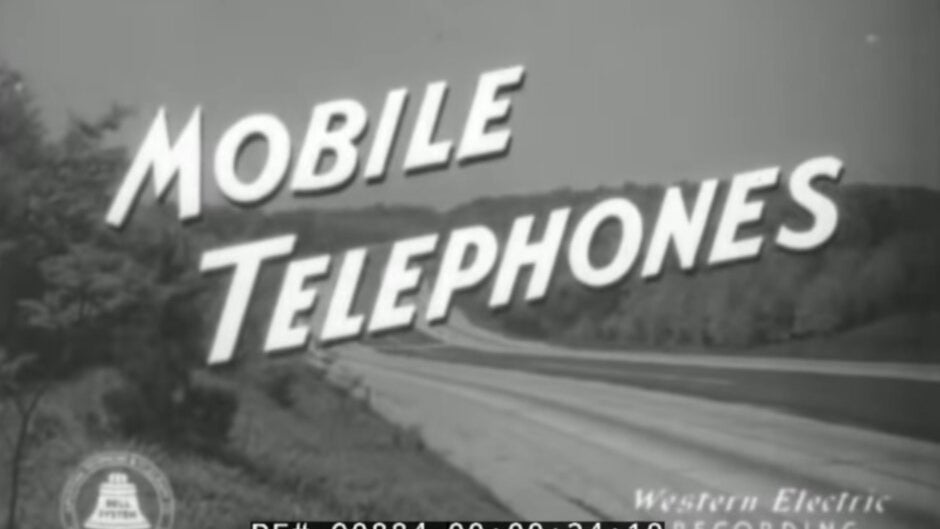You must see this 1940s video showing what passed for mobile telephony at the time

Do you remember life before cellphones? Japan's Nippon Telegraph and Telephone (NTT) launched the first cellular network in 1979 six years after Motorola demonstrated the first handheld mobile handset. But mobile telephony, while not necessarily of the handheld variety, has been around since before even yours truly was born. That is demonstrated by a film made by Bell Telephone in the 1940s and posted on YouTube by Periscope Films.
The film, titled Mobile Telephones, was produced to show businesses the advantages of having their vehicles equipped with a mobile phone. For example, a trucking company needs to add an unscheduled stop to the route of a pair of drivers already on the road. Today, the drivers would be easily reached through their cellphone or via text. But in the 1940s, a "practical example of modern communication" required a vehicle to be equipped with a transmitter and a receiver unit. While the announcer calls them "compact," these two unwieldy looking boxes were shoved in the trunk along with a larger battery and generator for additional power. Add a flexible antenna on the roof of the vehicle, and the installation process wasn't much different than the early cellular carphones from the 1980s.
Making a phone call on a mobile phone required the assistance of a live operator
The handset had a button that had to be pressed in by the user while talking and released while listening. When not in use, the handset was placed in a cradle that was part of a box installed under the dashboard. An incoming call was announced by a ringing that was generated by the long distance operator and a light on the left side of the unit would glow. Pulling the handset out of the cradle stopped the ringing and turned off the light. If the driver was away from the phone, the light remained on until he or she got in touch with the mobile operator to see who called.


Without modern technology, the process of making a call and receiving one was handled differently back then. When a call was placed to and from a mobile phone, a long distance operator had to make the connection. Conversations were sent through a combination of radio signals and telephone lines. Interestingly, you might note that the radio signals used Frequency Modulation known these days as FM. While consumers were listening to AM radio in those days, it would be several years before teens were listening to Led Zepplin on their FM radios.
As the film notes "In order to reach vehicles traveling the highways between cities, a number of transmitting and receiving stations connected to telephone lines are spaced at intervals along the highway so that one will always be in range of the moving vehicle." Back then, the high-frequency antennas used for this service were placed on high ground because they needed to maintain a line of sight with the antenna on the vehicle.
"The mobile telephone greatly expands the scope of voice communications," Bell Telephone said on the film adding that it is "one more step for telephone service for anyone, anytime, anywhere." According to one person who left a comment on YouTube, this film appears to be from 1948 when AT&T was beginning to offer Mobile Telephone Service to the largest areas of the country. Apparently, this technology was not much different than the two-way communications system used by the police at the time. There were two different services called "Urban" and "Highway" with the former used within 25 miles of a major city. The "Urban" service used signals in the high band 152/158 MHz frequencies while the "Highway" service, which was used in the rest of the country, relied on low band 35/43 MHz frequencies. Today, T-Mobile's low-band 5G service employs low-band 600MHz spectrum and its mmWave airwaves are in the 28GHz/39GHz frequencies.
While the film shows what might have passed for cutting-edge technology back in the day, it should make you appreciate how much easier we have it today. These days, touchscreen phones that fit in our pockets allow us to make calls, go online, take pictures/video, listen to and view streaming content and communicate through text messaging. Back in 1948, no one could have predicted what mobile telephony would be like in 2020. Today, we can't even fathom what mobile communications will look like in 2092.
Follow us on Google News














Things that are NOT allowed:
To help keep our community safe and free from spam, we apply temporary limits to newly created accounts: